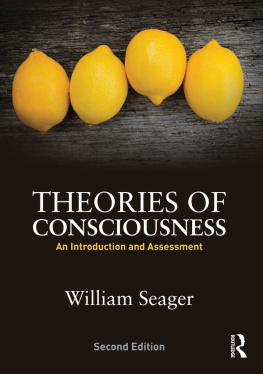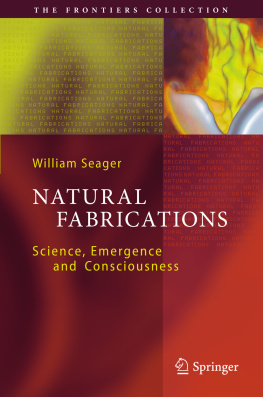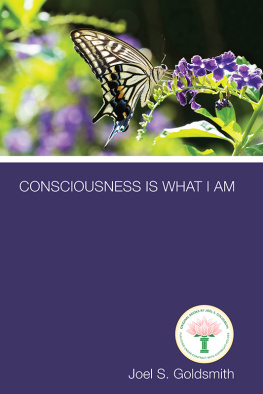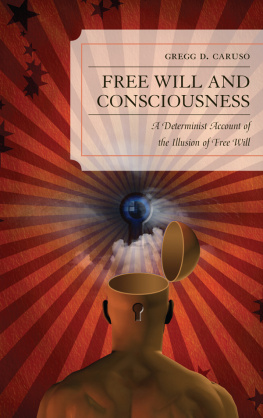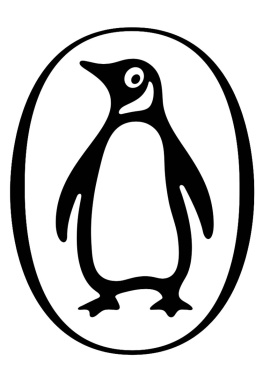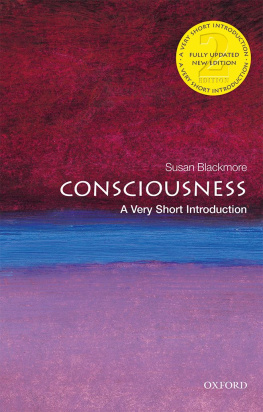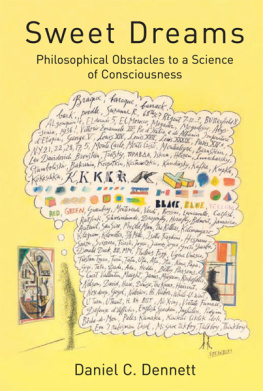William Seager - Theories of Consciousness: An Introduction and Assessment
Here you can read online William Seager - Theories of Consciousness: An Introduction and Assessment full text of the book (entire story) in english for free. Download pdf and epub, get meaning, cover and reviews about this ebook. year: 2016, publisher: Routledge, genre: Politics. Description of the work, (preface) as well as reviews are available. Best literature library LitArk.com created for fans of good reading and offers a wide selection of genres:
Romance novel
Science fiction
Adventure
Detective
Science
History
Home and family
Prose
Art
Politics
Computer
Non-fiction
Religion
Business
Children
Humor
Choose a favorite category and find really read worthwhile books. Enjoy immersion in the world of imagination, feel the emotions of the characters or learn something new for yourself, make an fascinating discovery.
- Book:Theories of Consciousness: An Introduction and Assessment
- Author:
- Publisher:Routledge
- Genre:
- Year:2016
- Rating:4 / 5
- Favourites:Add to favourites
- Your mark:
Theories of Consciousness: An Introduction and Assessment: summary, description and annotation
We offer to read an annotation, description, summary or preface (depends on what the author of the book "Theories of Consciousness: An Introduction and Assessment" wrote himself). If you haven't found the necessary information about the book — write in the comments, we will try to find it.
Despite recent strides in neuroscience and psychology that have deepened understanding of the brain, consciousness remains one of the greatest philosophical and scientific puzzles. The second edition of Theories of Consciousness: An Introduction and Assessment provides a fresh and up-to-date introduction to a variety of approaches to consciousness, and contributes to the current lively debate about the nature of consciousness and whether a scientific understanding of it is possible.
After an initial overview of the status and prospects of physicalism in the face of the problem of consciousness, William Seager explores key themes from Descartes - the founder of the modern problem of consciousness. He then turns to the most important theories of consciousness:
- identity theories and the generation problem
- higher-order thought theories of consciousness
- self-representational theories of consciousness
- Daniel Dennetts theory of consciousness
- attention-based theories of consciousness
- representational theories of consciousness
- conscious intentionality
- panpsychism
- neutral monism.
Thoroughly revised and expanded throughout, this second edition includes new chapters on animal consciousness, reflexive consciousness, combinatorial forms of panpsychism and neutral monism, as well as a significant new chapter on physicalism, emergence and consciousness.
The books broad scope, depth of coverage and focus on key philosophical positions and arguments make it an indispensable text for those teaching or studying philosophy of mind and psychology. It is also an excellent resource for those working in related fields such as cognitive science and the neuroscience of consciousness.
William Seager: author's other books
Who wrote Theories of Consciousness: An Introduction and Assessment? Find out the surname, the name of the author of the book and a list of all author's works by series.

